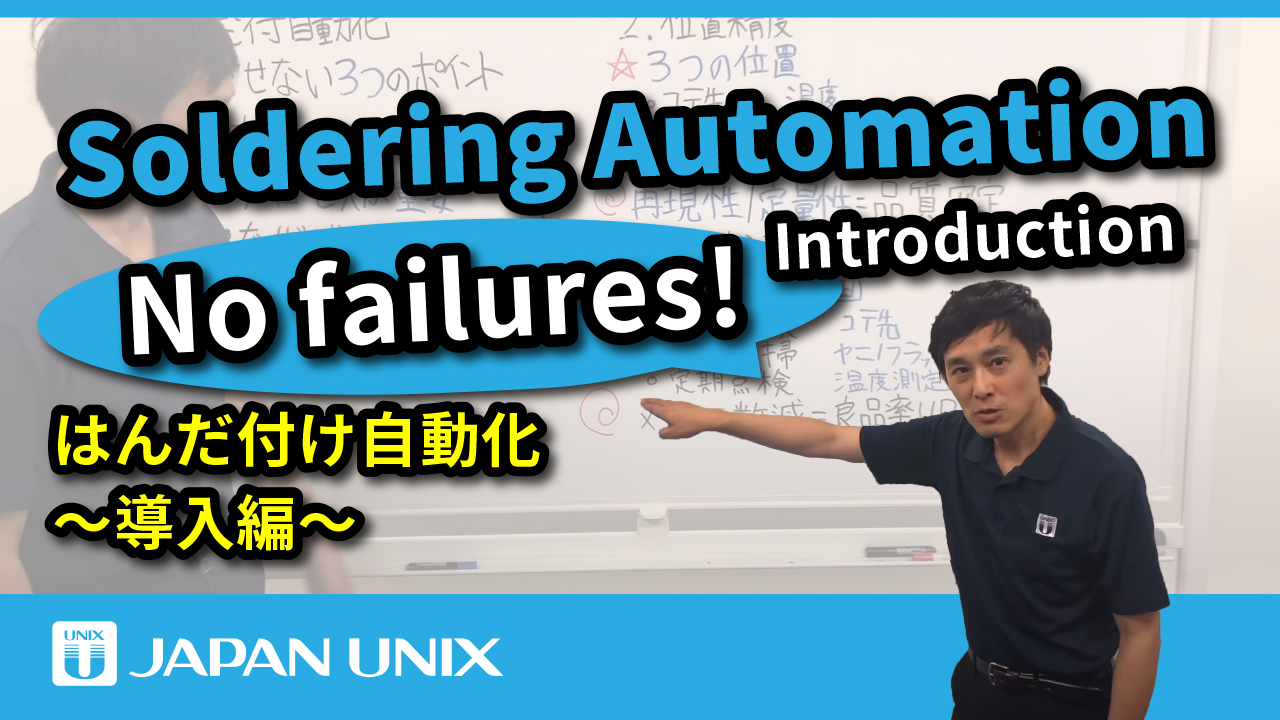
No Failure! Automation by Soldering Robot. -For Installing Robots- [YouTube Tech Article]

YOUTUBE Tech Article!
No Failure! Automation by Soldering Robot. -For Installing Robots- ?

Watch the Video for this Column
Theme
Nakano Hello everyone, my name is Nakano from Japanunix. Nice to meet you.
Preventing Failures in Soldering Automation: 3 Key Points
Nakano Today’s theme is “Preventing Failures in Soldering Automation: 3 Key Points!” We have introduced thousands of robots over the past 30 years, and while some customers have had smooth experiences from robot installation to startup, others have faced challenges along the way.
What makes the difference? Based on our past experiences, I would like to share with you the 3 key points that are crucial for successful implementation.
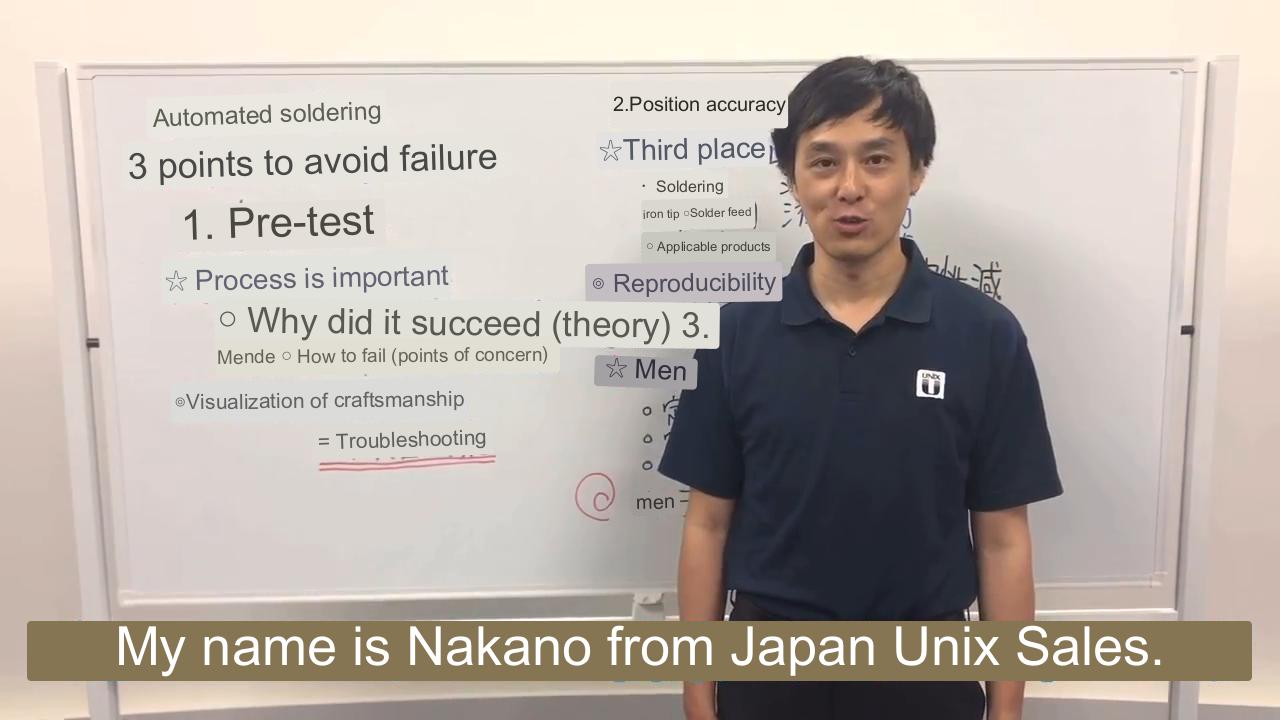
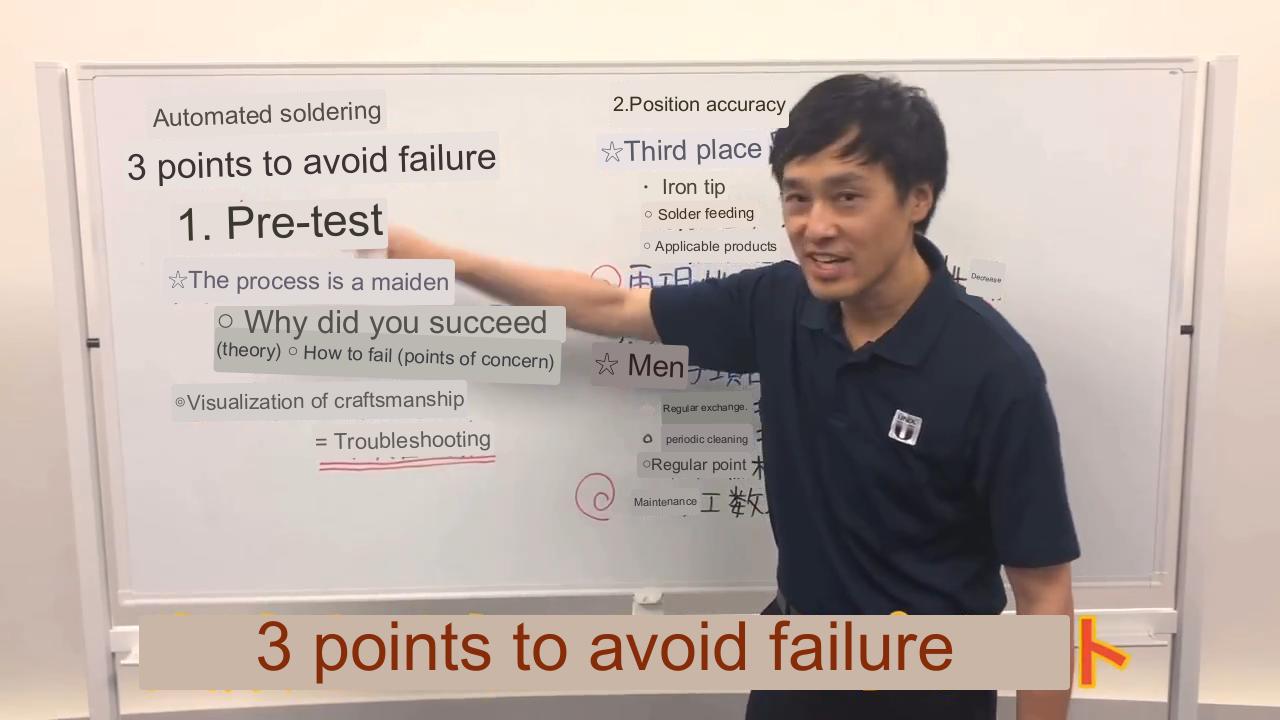
1. Pre-Test
Nakano First, pre-test. We find it a bit scary when customers purchase without conducting any tests. So, what is this test? The process is essential.
Understanding why soldering was successful, the theoretical aspects of soldering, and the concerns about potential failures. We need to identify those points. Soldering is often referred to as a craftsmanship. But craftsmanship can be a bit difficult to understand.
We break it down into finer details and quantify it to make it visible. By understanding this process, we can identify potential issues during mass production and take countermeasures.
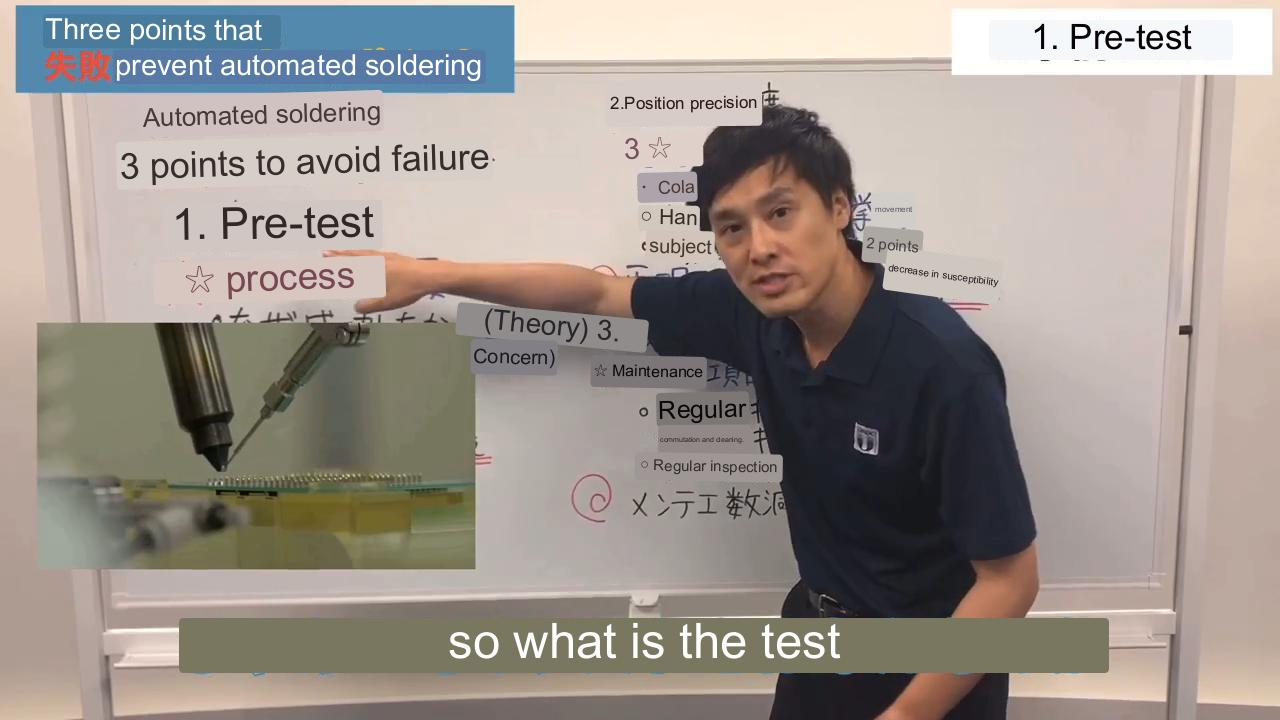
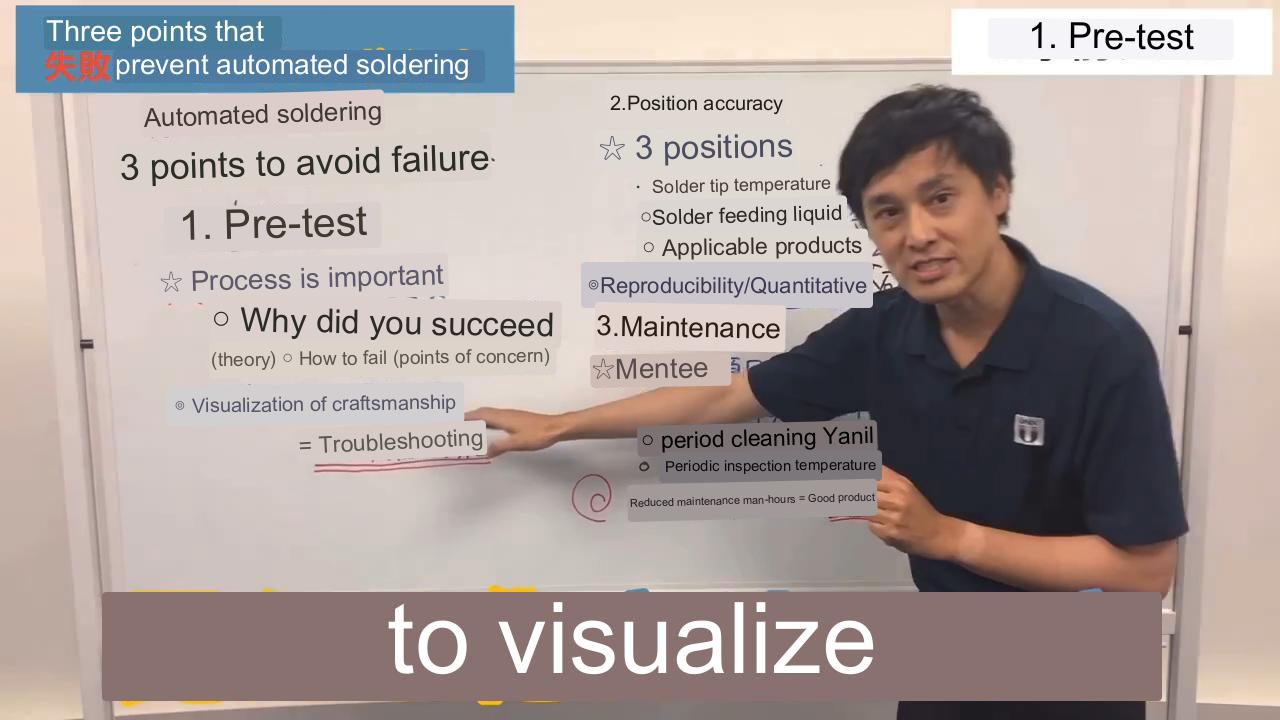
2. Position Accuracy
Nakano Secondly, position accuracy. Since it is a robot, you might think that it always comes out in the same position. However, there are 3 crucial positions in soldering that you should know about.
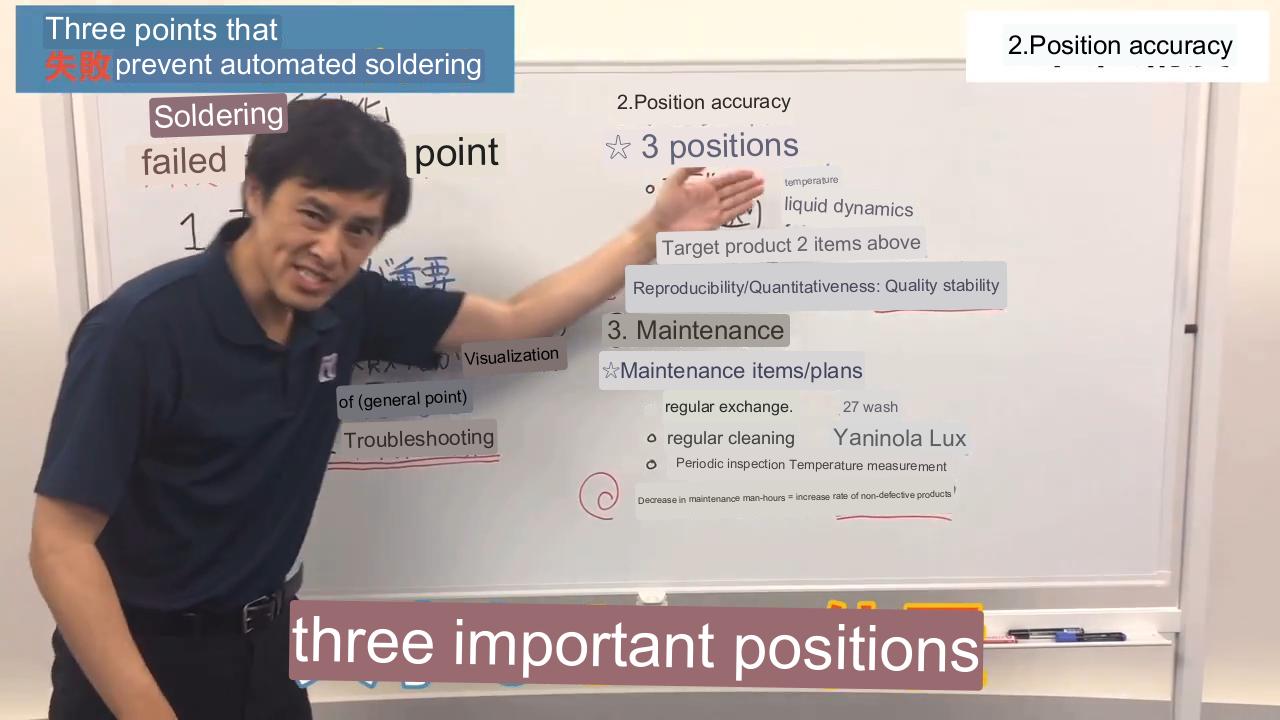
1. Soldering Iron Tip Position
Nakano First, the soldering iron tip position. It is the part that directly contacts the product. However, since heat is applied, it is likely to undergo thermal expansion and change in size. Also, due to repeated contact, it will naturally wear out.
Yes, when heat is applied, does it have the same consistency? It seems like there might be some changes, right?
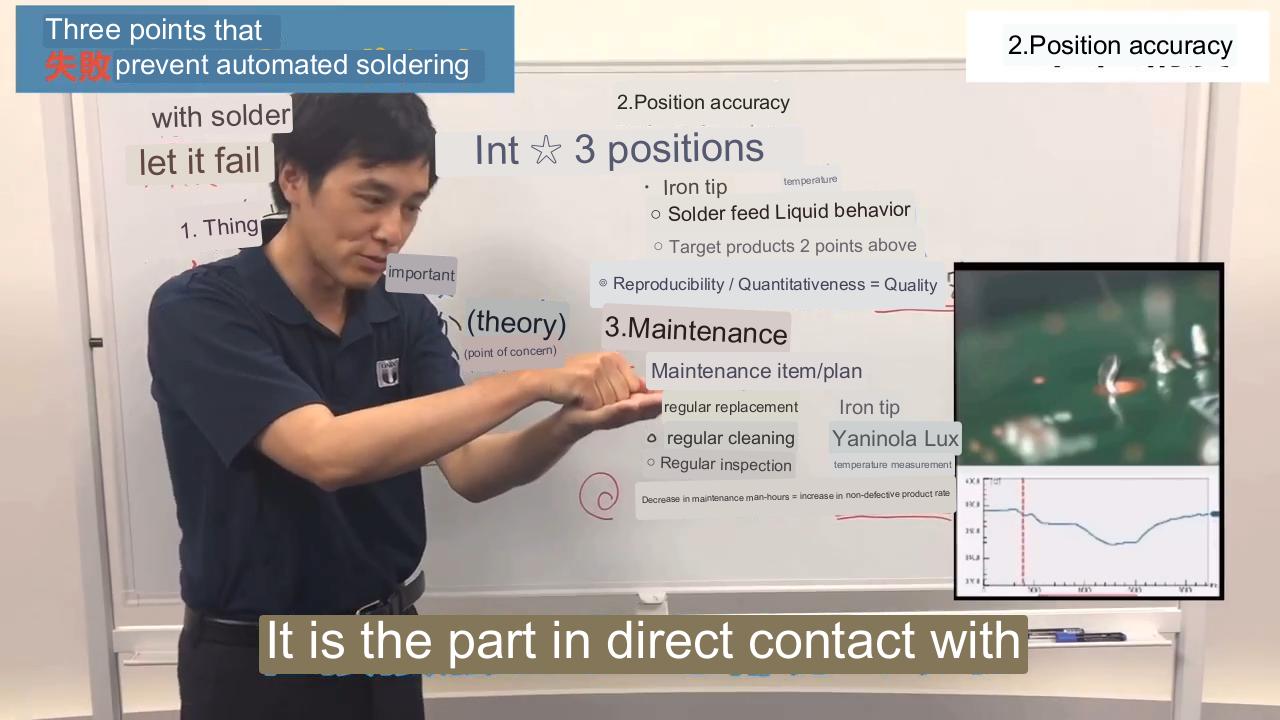
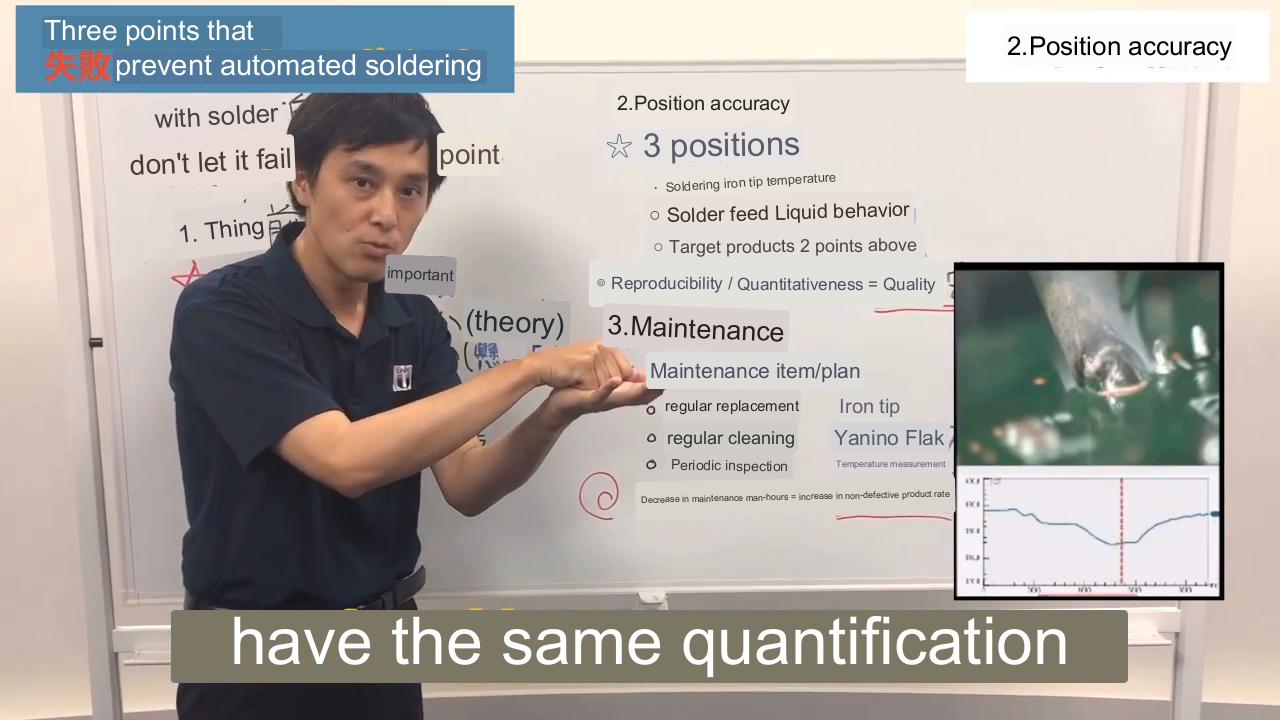
2. Solder Feed Position
Nakano Next, the solder feed. When you hear solder, you might think that the solder wire we use is a solid because it’s a metal thread, right? Well, solder is actually a liquid. At temperatures above 220-230 degrees where the soldering iron tip touches, the solder is in a liquid state.
Let’s think about liquids for a moment. For example, the way water flows from the left shoulder to the right shoulder, or the way it drips downward. Does solder behave the same way? Liquids don’t flow in the same manner when they hit something on the right or left, or when they flow downward, right?
That’s right, when it comes to the behavior of the liquid in solder feed, position seems to play a role as well.
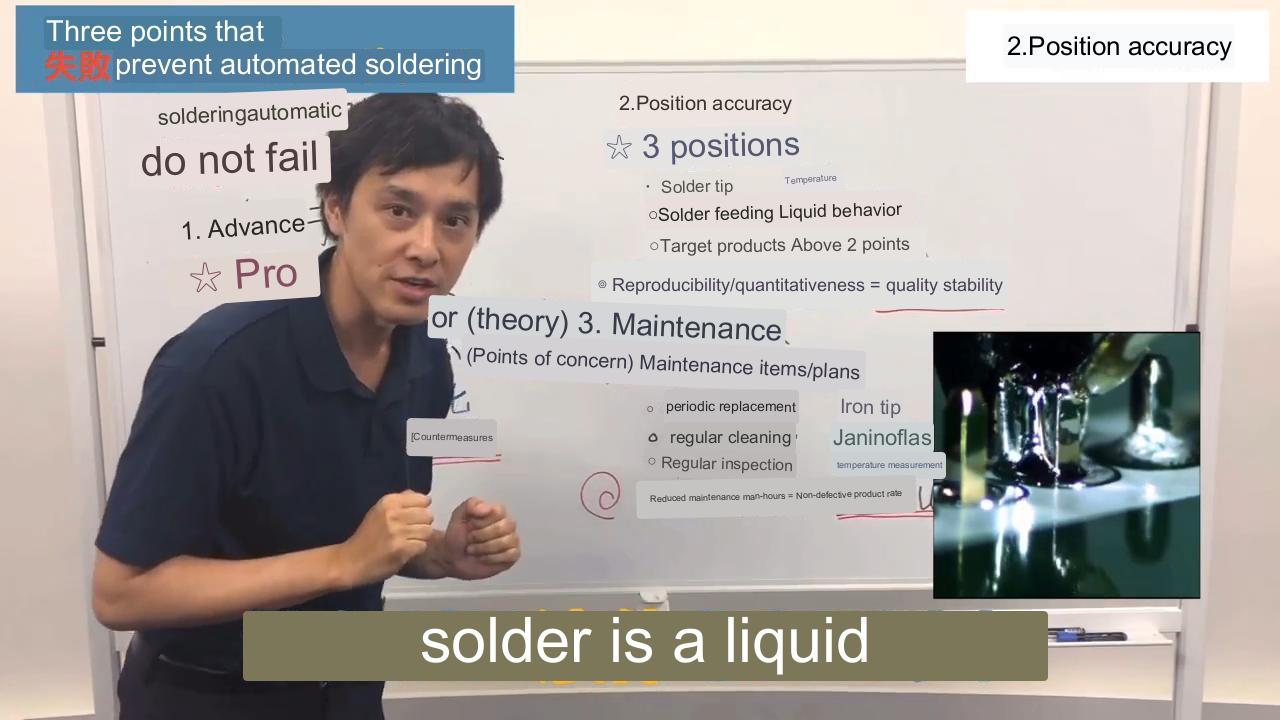
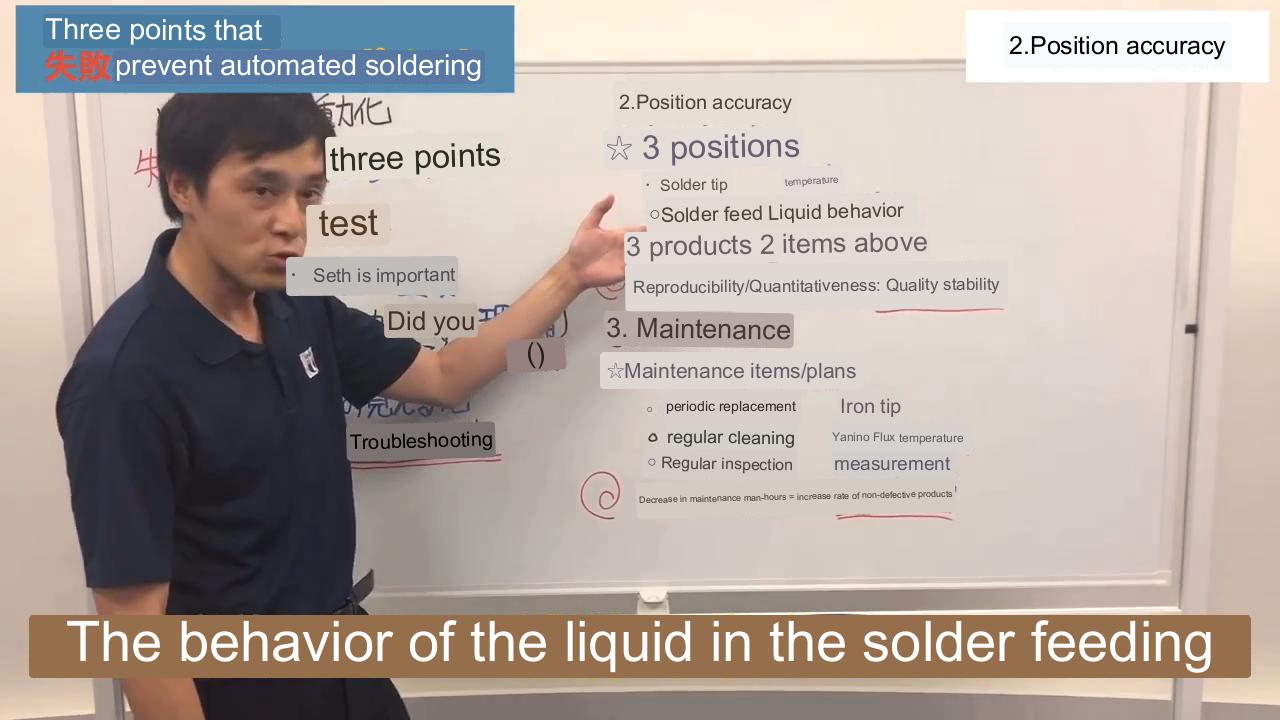
3. Target Product Position
Nakano Thirdly, the target product. Let’s say I’m referring to a pin. An inserted component. It doesn’t fit perfectly into the hole, so there’s a bit of space. That means the pin can shift to the right or left.
For example, let’s say the soldering iron tip hits here. How does the heat applied when it’s in this position (shifted to the right) compare to when it’s in this position (shifted to the left)? Do they look the same? They seem a bit different, don’t they? That’s right. The target product inevitably has a certain degree of variation, but the range of displacement in terms of position seems to exist.
However, by carefully determining how these variations or how the position can be offset, by considering and ensuring reproducibility and consistency, it will lead to stable product quality after mass production.
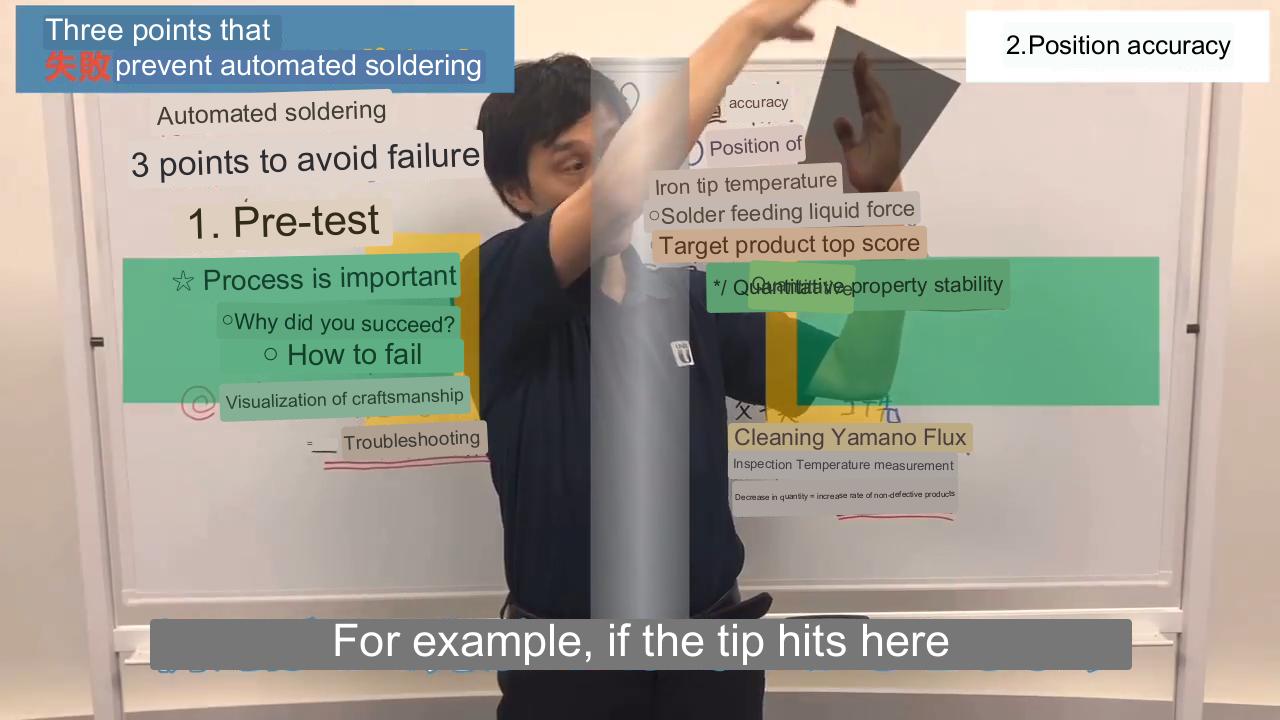
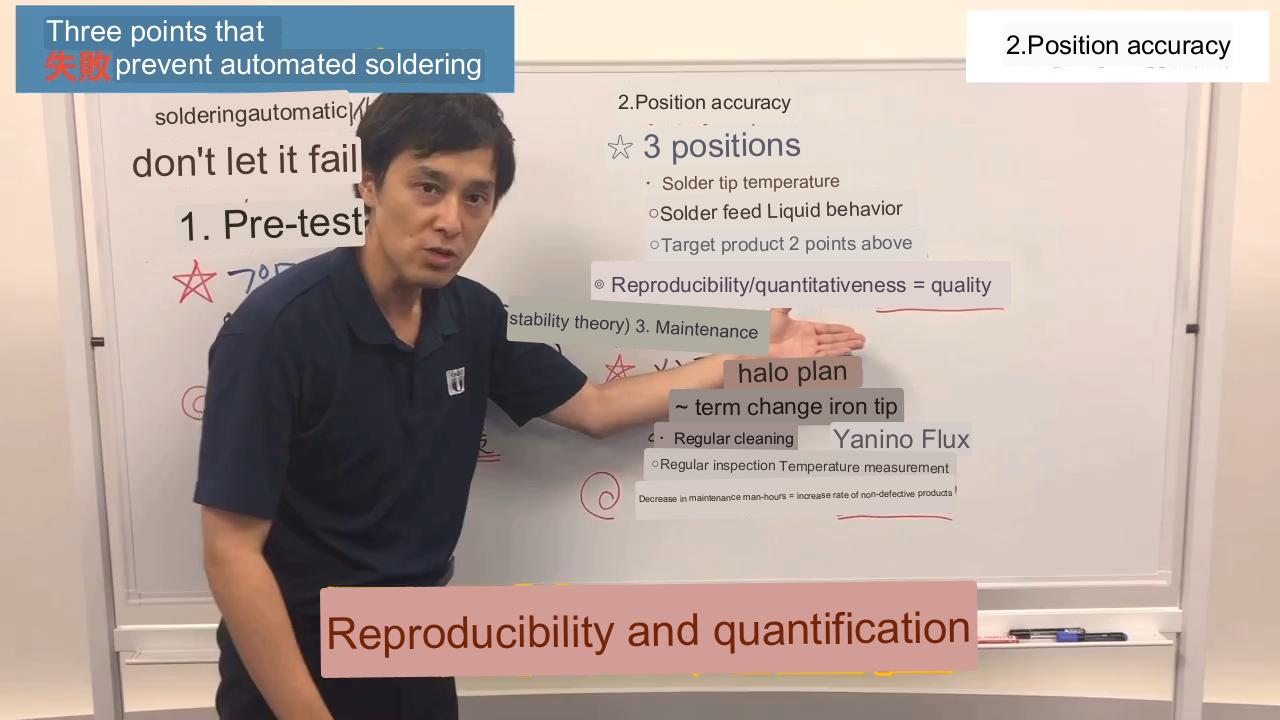
3. Maintenance
Nakano The third one is maintenance. Of course, it would be great if there were no maintenance required. That’s what we strive for. However, there are still some areas that require maintenance. It seems that considering the maintenance items and creating a plan for them is becoming important even in soldering.
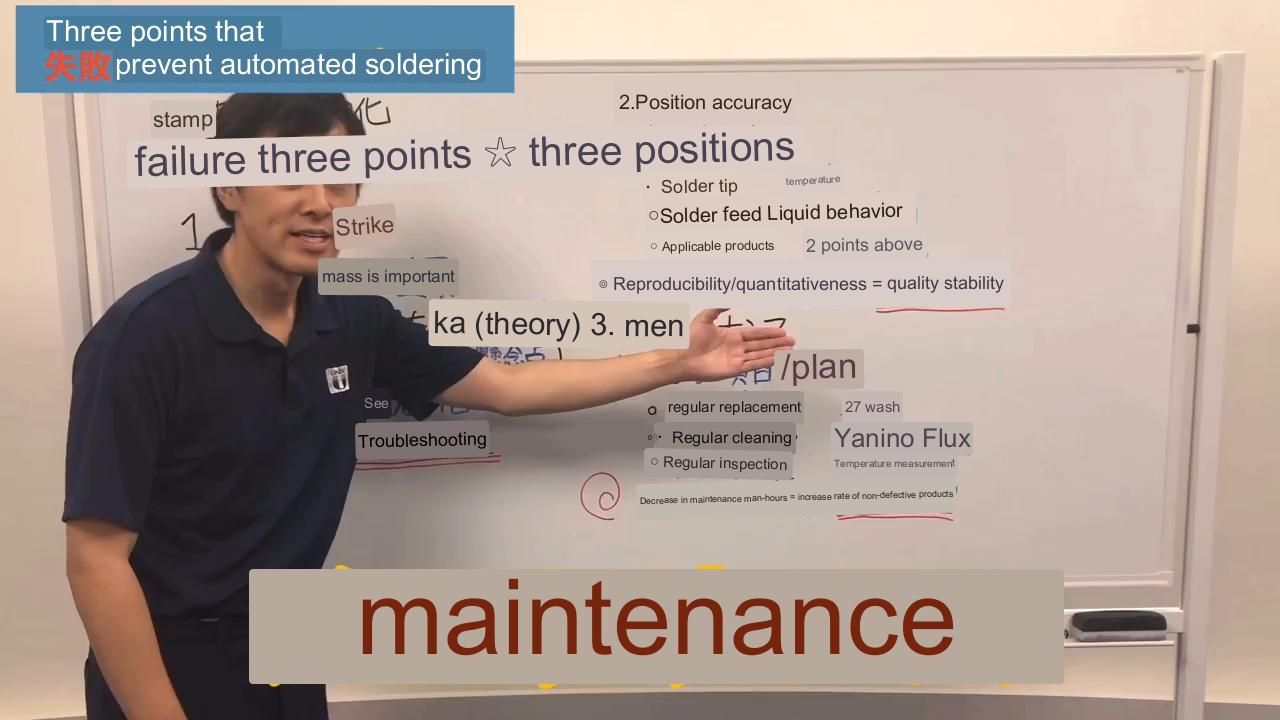
1. Regular Replacement
Nakano First, regular replacement. As I mentioned earlier, the soldering iron tip wears out over time. It needs to be regularly replaced. Sometimes you need to replace it every two days, and sometimes every five days. If it’s changed based on how you feel, it seems that the issue of reproducibility and consistency arises. It seems necessary to do it regularly and consistently.
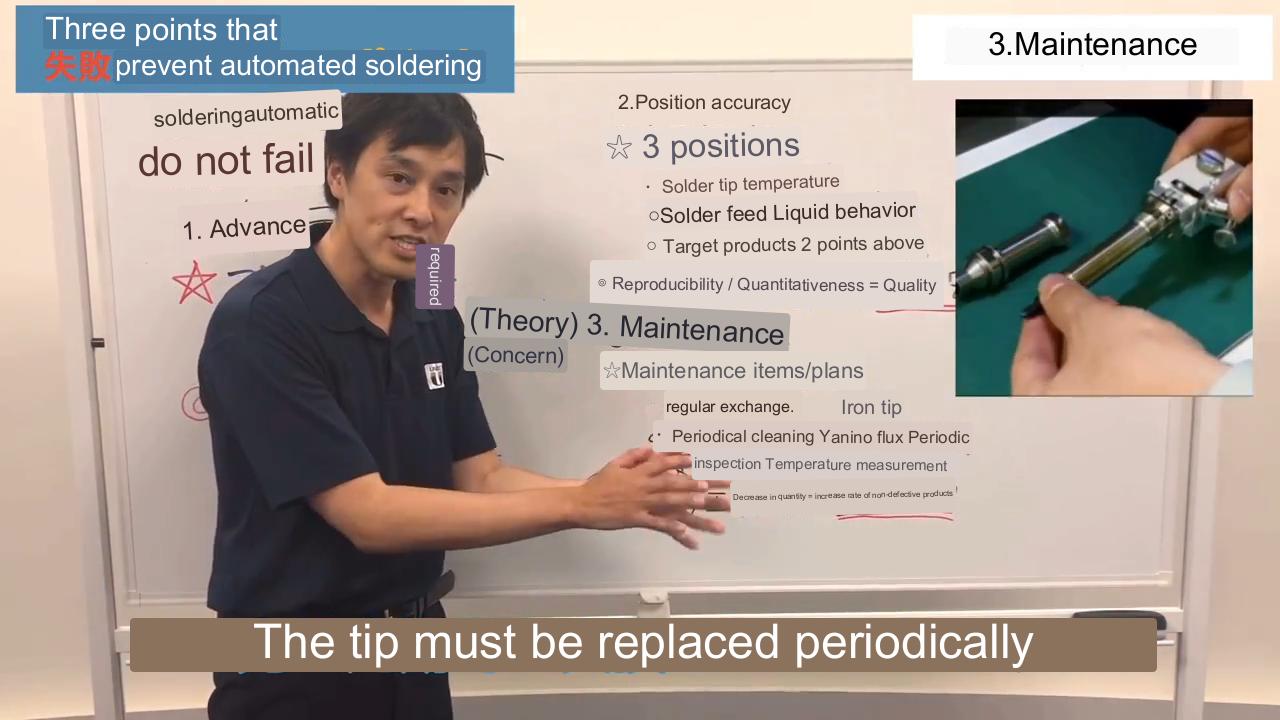
2. Regular Cleaning
Nakano Next, regular cleaning. In solder, there are substances like rosin flux and pine resin. The flux inside evaporates when heated and can stick to the robot arm during soldering. It can accumulate and even become like icicles over time. This can also affect the movement of the robot. It seems necessary to clean it regularly.
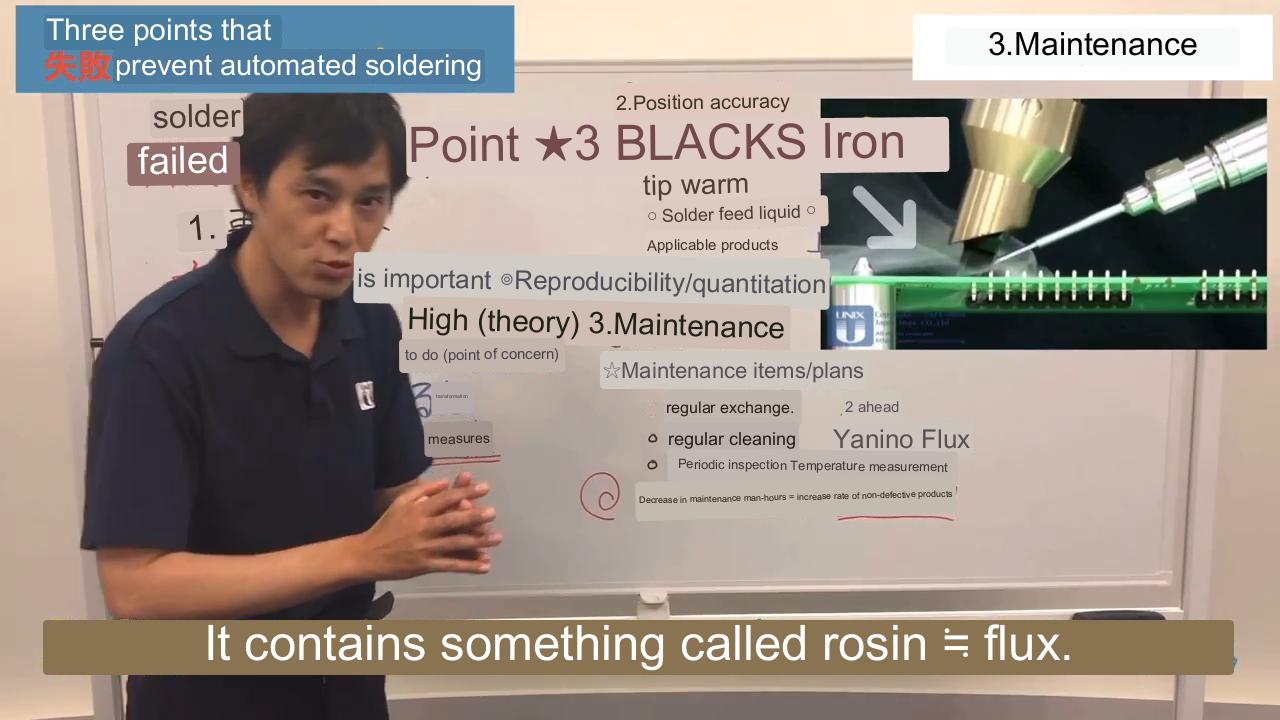
3. Regular Inspection
Nakano The third one is regular inspection. Of course, the robot provides temperature information, but it seems important to properly verify if it’s accurate. It’s the most crucial aspect in soldering. Therefore, regular inspections also seem necessary.
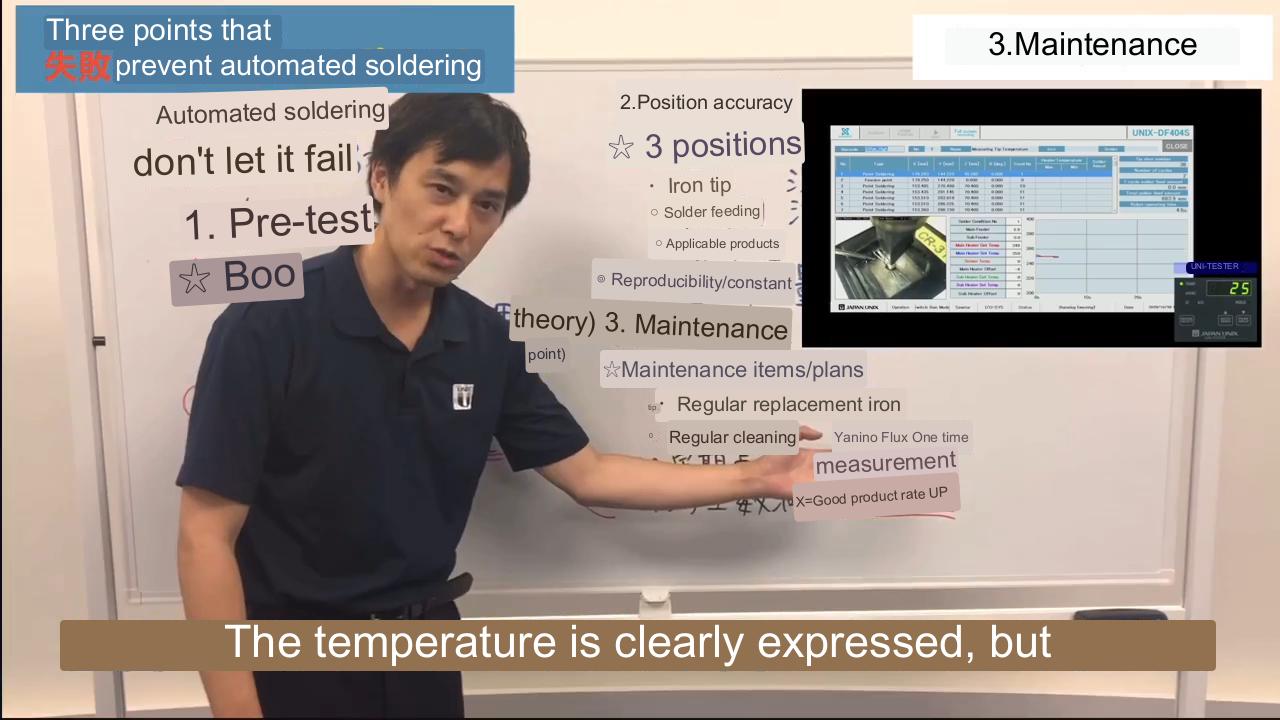
No Choco Stops
Nakano There are many things to do regularly, and it may seem difficult and bothersome. However, in the automotive industry, there is a term called “no choco stops.” It means that production should continue as much as possible without stopping. It aims to minimize unplanned human intervention or unplanned tasks. Therefore, it is essential to carefully consider the maintenance aspect, regularly perform it, and simplify it or reduce the number of tasks as much as possible to improve the yield rate.
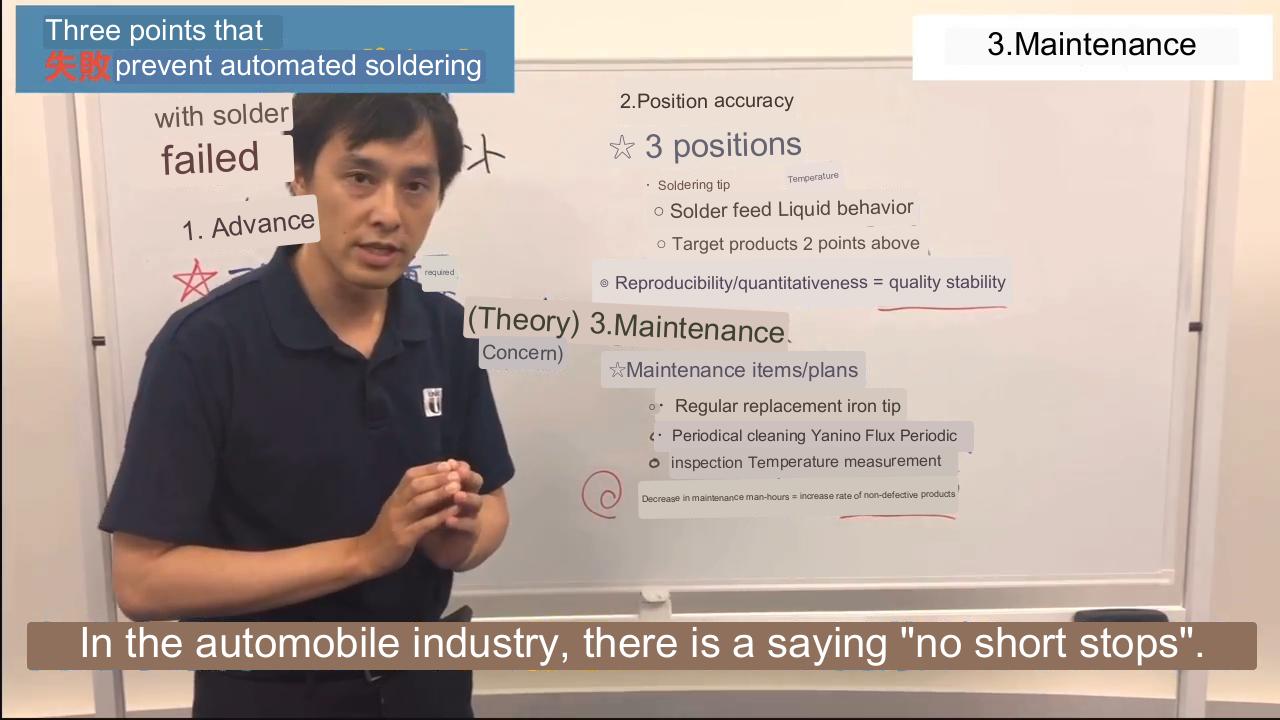
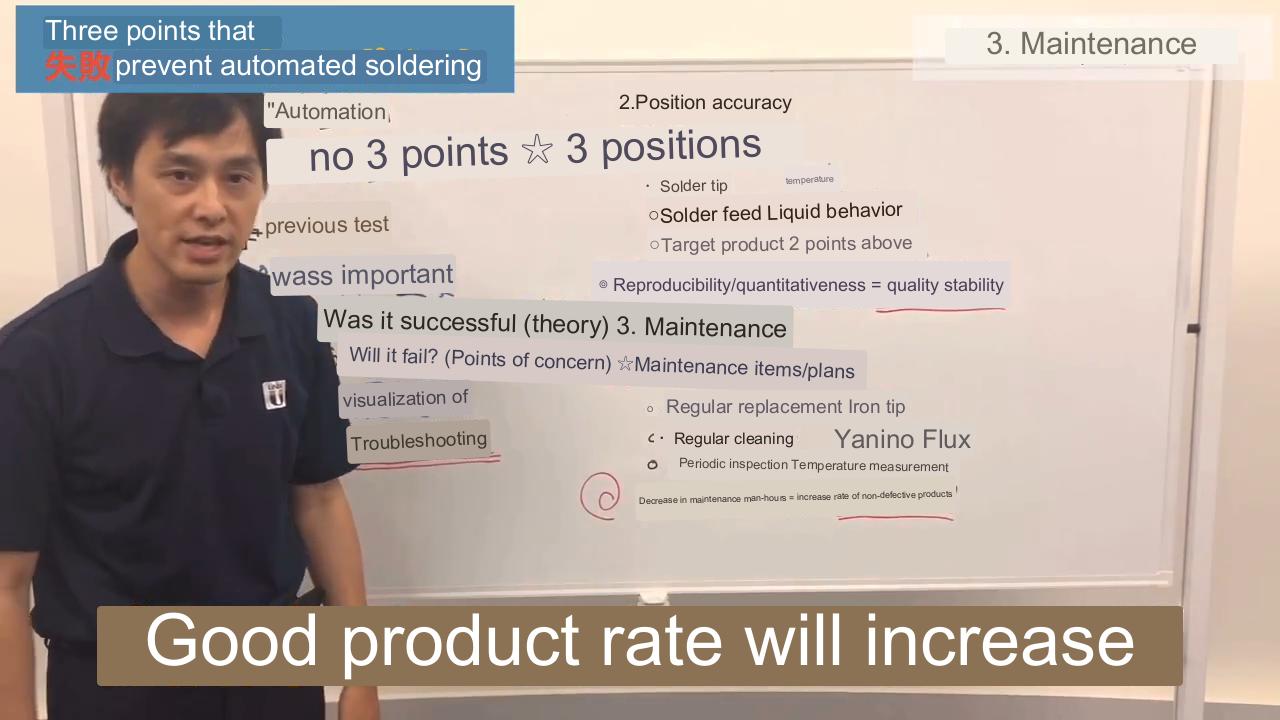
Summary
Nakano Let’s summarize. First, preliminary testing. It is important to perform it thoroughly. Understanding the process is crucial. Second, positioning accuracy. There were three positions mentioned. It is important to carefully assess reproducibility and consistency. Third, maintenance. Unfortunately, maintenance is necessary. It is crucial to consider the maintenance items and plan for them. That becomes very important.
For more details, please contact Japan Unix. We are willing to cooperate and assist you in automating your soldering process. Thank you very much.
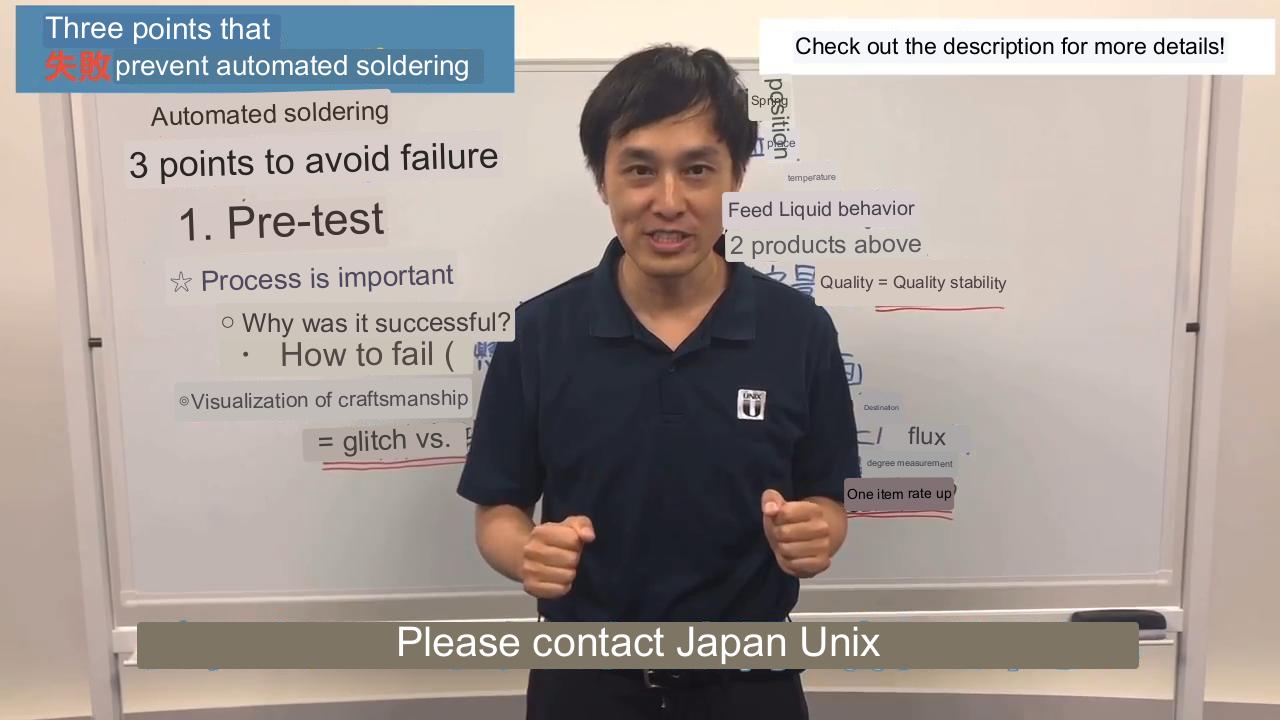
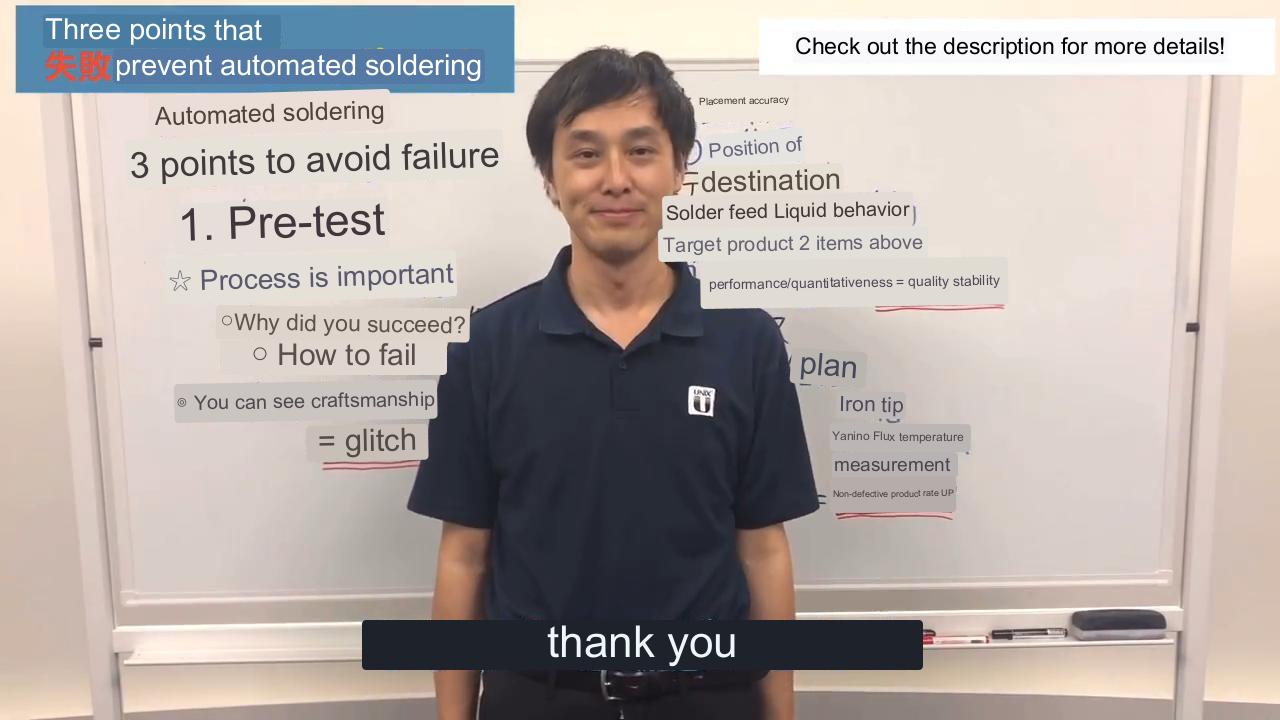
Related Products & Services
Explore the related products and services that support the quality and operational maintenance of your production site.
Watch the video for this column


 日本語
日本語 中文
中文 Deutsch
Deutsch Español
Español